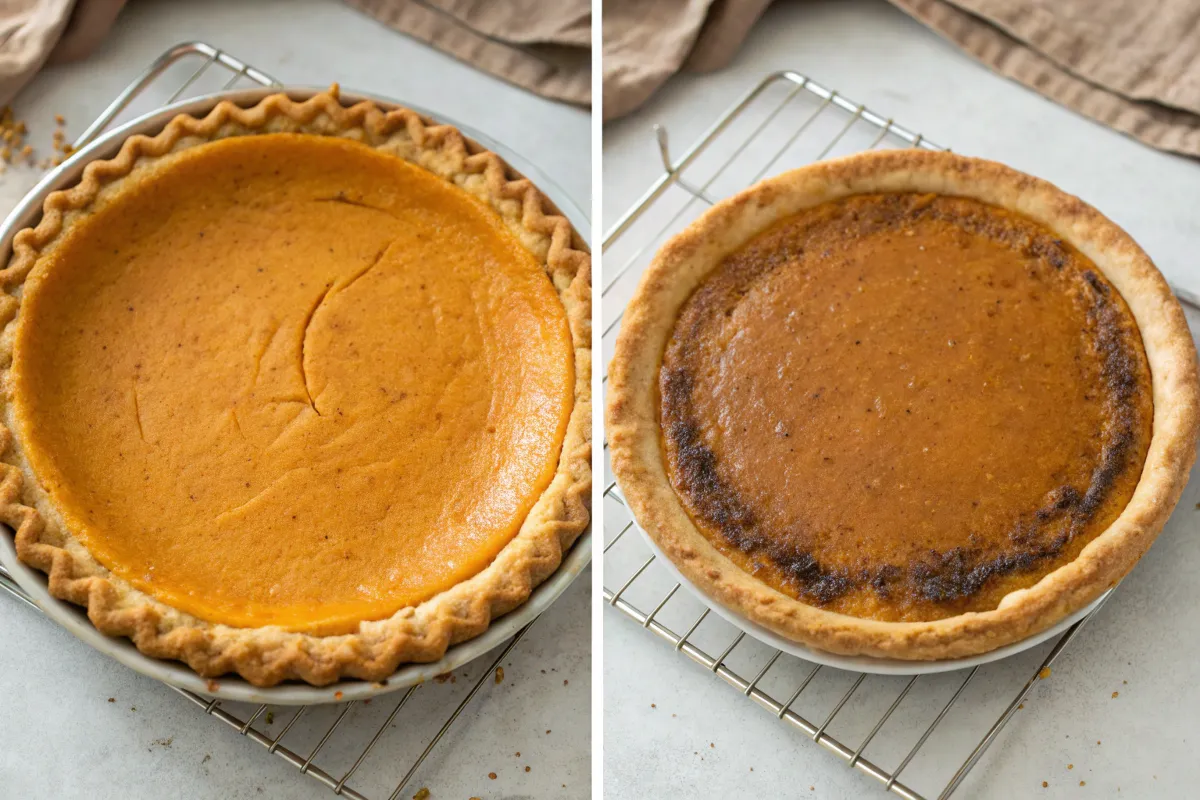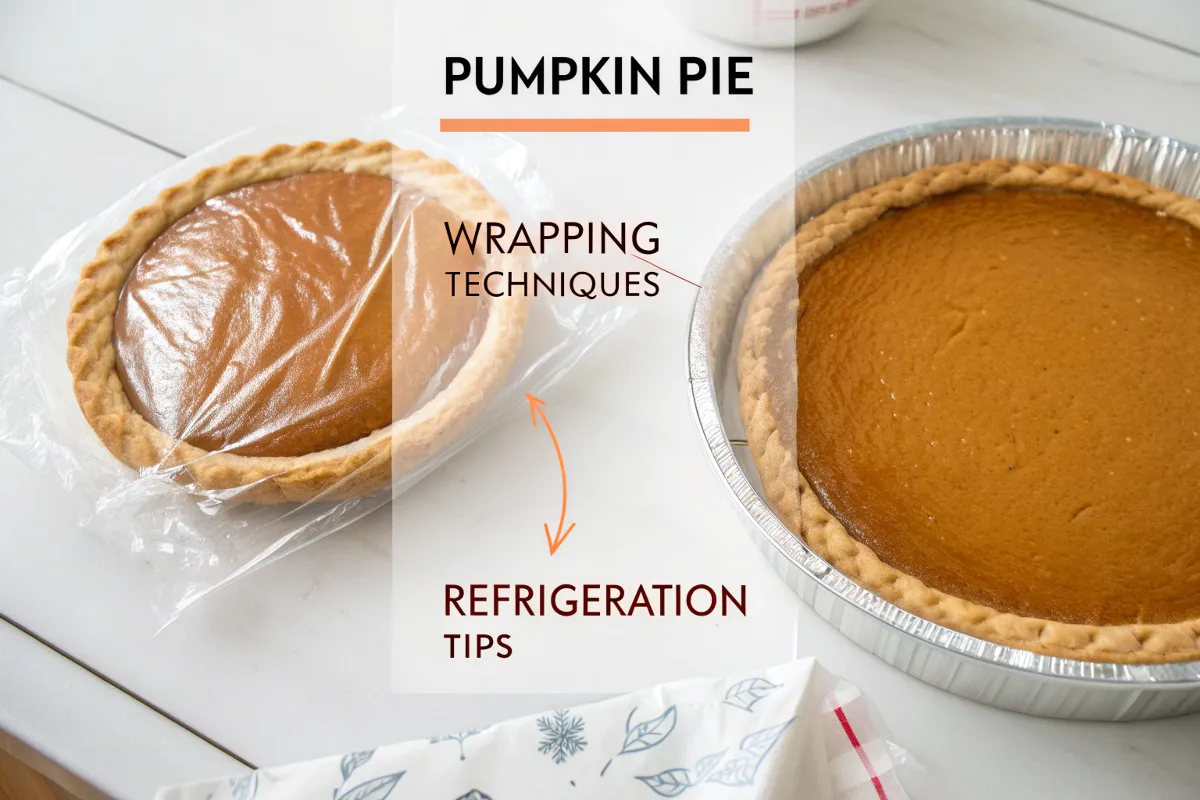How long is pumpkin pie good for? This is a crucial question for holiday bakers and dessert enthusiasts alike. Understanding the shelf life of this autumnal treat ensures you enjoy it at its best and avoid any unpleasant surprises. Let’s dive into the secrets of pumpkin pie preservation.
The Amazing Science Behind Pumpkin Pie Spoilage
Pumpkin pie, a creamy custard delight, is unfortunately prone to spoilage. Its ingredients create the perfect environment for bacteria and mold to thrive. The high moisture content, combined with sugar and dairy, makes it a breeding ground for unwanted microbial guests.
The science behind this spoilage is simple. Bacteria consume the nutrients in the pie, breaking down the sugars and proteins. This process produces byproducts that cause off-flavors, odors, and changes in texture. Mold, on the other hand, manifests as visible fuzzy growths, signaling advanced spoilage.
Factors Affecting Pumpkin Pie’s Lifespan
Several factors influence how quickly pumpkin pie spoils. The ingredients used, storage conditions, and handling practices all play a role. For instance, a pie made with fresh, high-quality ingredients and stored properly will last longer than one made with less-than-fresh ingredients left at room temperature.
Another key factor is whether the pie contains preservatives. Store-bought pies often include ingredients that inhibit microbial growth, extending their shelf life compared to homemade pies. However, even with preservatives, proper storage is still essential.
Image Placeholder: A close-up of a pumpkin pie slice showing potential signs of spoilage, such as a slightly cracked surface or moisture droplets. Alt text: How long is pumpkin pie good for: signs of spoilage.
The Incredible Shelf Life of Pumpkin Pie: What to Expect
Typically, pumpkin pie lasts for about 2 to 4 days when stored in the refrigerator. This timeframe assumes that the pie has been handled properly and kept consistently cold. Leaving the pie at room temperature for extended periods significantly shortens its lifespan.
Homemade pumpkin pie, without the benefit of preservatives, generally has a shorter shelf life than store-bought varieties. If you’re making a pie from scratch, be sure to refrigerate it promptly after it has cooled. This will help to slow down the growth of bacteria and keep it fresher for longer.
Room Temperature vs. Refrigeration: A Crucial Difference
Storing pumpkin pie at room temperature is a recipe for disaster. The warm environment encourages rapid bacterial growth, leading to spoilage within hours. It’s best to refrigerate the pie as soon as possible, ideally within 2 hours of baking or purchasing it.
Refrigeration slows down the microbial activity, preserving the pie’s texture and flavor for a few extra days. It’s a simple step that makes a big difference in preventing foodborne illness and ensuring a delightful dessert experience.
Essential Tips for Storing Pumpkin Pie the Ultimate Way
Proper storage is paramount to extending the life of your pumpkin pie. Follow these essential tips to keep your pie fresh and delicious for as long as possible:
-
Cool Completely: Before refrigerating, allow the pie to cool completely to room temperature. This prevents condensation from forming inside the container, which can promote bacterial growth.
-
Wrap Tightly: Wrap the pie tightly with plastic wrap or aluminum foil, or store it in an airtight container. This helps to prevent it from drying out and absorbing odors from other foods in the refrigerator.
-
Refrigerate Promptly: As mentioned earlier, refrigerate the pie within 2 hours of baking or purchasing it. The sooner it’s chilled, the better.
-
Avoid Temperature Fluctuations: Keep the pie at a consistent temperature in the refrigerator. Avoid repeatedly taking it in and out, as temperature fluctuations can accelerate spoilage.
Signs of Spoilage: Identifying the Danger
Knowing how to identify signs of spoilage is essential for avoiding foodborne illness. Look out for the following indicators that your pumpkin pie has gone bad:
-
Off-Odor: A sour or unusual smell is a clear sign that the pie is no longer safe to eat.
-
Mold Growth: Any visible mold, whether it’s fuzzy or slimy, indicates advanced spoilage.
-
Changes in Texture: A watery or excessively soft texture can also be a sign of spoilage.
-
Discoloration: Dark spots or discoloration on the surface of the pie may indicate bacterial growth.
If you notice any of these signs, it’s best to err on the side of caution and discard the pie. It’s not worth risking your health for a slice of potentially contaminated dessert.
Image Placeholder: A pie chart illustrating the shelf life of pumpkin pie under different storage conditions (room temperature, refrigeration, freezing). Alt text: Pumpkin pie shelf life comparison.
How Long Is Pumpkin Pie Good For: The Freezing Option
Freezing pumpkin pie is a great way to preserve it for longer periods. When properly frozen, pumpkin pie can last for 1 to 2 months without significant loss of quality. This makes it a convenient option for those who want to prepare ahead for the holidays or simply enjoy a slice of pie whenever the craving strikes.
To freeze pumpkin pie, follow these steps:
-
Cool Completely: As with refrigeration, ensure the pie is completely cool before freezing.
-
Wrap Tightly: Wrap the pie tightly with multiple layers of plastic wrap and then a layer of aluminum foil. This will help to prevent freezer burn.
-
Freeze Quickly: Place the wrapped pie in the freezer, ensuring it’s not in contact with other items that could crush it.
-
Thaw Properly: When you’re ready to eat the pie, thaw it in the refrigerator overnight. This will help to maintain its texture and prevent it from becoming soggy.
Freezing Considerations: Maintaining Quality
While freezing extends the shelf life of pumpkin pie, it can also affect its texture. The custard filling may become slightly grainy after thawing. However, this is often barely noticeable, especially if the pie is properly wrapped and thawed slowly.
It’s also important to note that freezing may slightly diminish the flavor of the pie. To compensate, you can add a touch of extra spice or vanilla extract to the filling before freezing.
7 Terrible Mistakes That Ruin Pumpkin Pie
Even with proper storage, certain mistakes can ruin your pumpkin pie and shorten its lifespan. Here are seven common pitfalls to avoid:
-
Leaving it at Room Temperature Too Long: As emphasized before, prolonged exposure to room temperature is a major culprit in pumpkin pie spoilage.
-
Not Cooling Properly Before Storage: Warm pie in a sealed container creates condensation, promoting bacterial growth.
-
Using Contaminated Utensils: Double-dipping or using dirty utensils can introduce bacteria to the pie, accelerating spoilage.
-
Storing it Uncovered: Exposing the pie to air allows it to dry out and absorb odors from the refrigerator.
-
Ignoring Expiration Dates: If you’re using canned pumpkin or other ingredients with expiration dates, be sure to heed them.
-
Repeated Temperature Fluctuations: Constantly taking the pie in and out of the refrigerator can disrupt its temperature and promote spoilage.
-
Overbaking the Pie: Overbaking can dry out the filling, making it more susceptible to spoilage.
Spotting the Warning Signs Early
Early detection is key to preventing a spoiled pumpkin pie from ruining your dessert experience. Pay close attention to the pie’s appearance, smell, and texture. If you notice any subtle changes, it’s best to investigate further before serving it.
A slightly sour smell, a slightly watery texture, or a subtle discoloration could all be early warning signs of spoilage. Don’t hesitate to discard the pie if you have any doubts about its freshness.
Image Placeholder: A visual comparison of a fresh pumpkin pie slice and a spoiled pumpkin pie slice, highlighting the differences in texture, color, and appearance. Alt text: Fresh vs. Spoiled Pumpkin Pie Comparison.
How Long Is Pumpkin Pie Good For: A Final Delicious Slice of Advice
Understanding how long is pumpkin pie good for is essential for enjoying this autumnal treat safely and deliciously. By following the storage tips outlined above and being vigilant about signs of spoilage, you can ensure that your pumpkin pie stays fresh and flavorful for as long as possible.
Remember, proper storage is the key to extending the life of your pumpkin pie. Whether you choose to refrigerate or freeze it, taking the time to store it correctly will pay off in the form of a delightful dessert experience. Don’t let a spoiled pie ruin your holiday celebration!
Frequently Asked Questions (FAQs)
Can I eat pumpkin pie after 7 days?
Generally, it’s not recommended to eat pumpkin pie after 7 days, even if it has been refrigerated. While it might not necessarily make you sick, the texture and flavor will likely have deteriorated, and the risk of bacterial contamination increases significantly after that point. It’s best to err on the side of caution.
Can I eat 3 week old pumpkin pie?
No, you should not eat 3-week-old pumpkin pie, regardless of whether it has been refrigerated. At that point, the pie is almost certainly spoiled and poses a significant risk of causing foodborne illness. Discard it immediately.
How can you tell when pumpkin pie goes bad?
You can tell when pumpkin pie goes bad by observing several signs. Look for an off or sour smell, visible mold growth, a watery or excessively soft texture, and any discoloration on the surface of the pie. If you notice any of these signs, the pie should be discarded.
Is pumpkin pie good after 10 days?
No, pumpkin pie is not typically good after 10 days, even if refrigerated. The risk of bacterial growth is too high, and the quality will have significantly deteriorated. It’s best to discard the pie after about 4 days in the refrigerator to ensure food safety and optimal taste.



